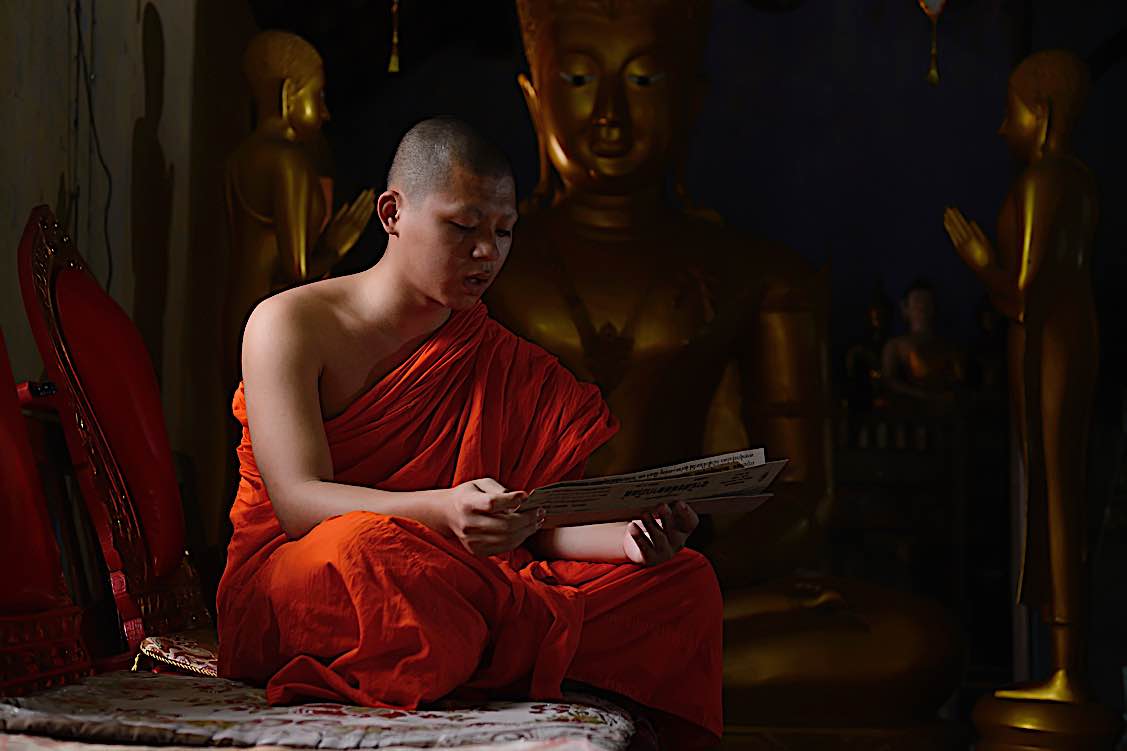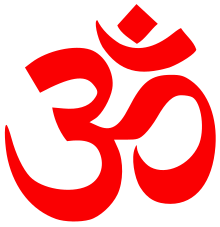Mantras can take meditation to the next level: empowering mantras to shift your mindset and improve your life
If you’re looking to take your meditation practice to the next level, mantras can definitely help. But don’t get the wrong idea. This isn’t about speaking. It’s not even so much about what you say, although it helps if you feel a spiritual connection with your mantra.

What is a mantra?
Mantras are words, phrases or sounds that people use when they meditate. Much like paying attention to your breath, mantras give you an area of focus. And you’re more likely to achieve a deeper level of focus with a mantra. (2)
In ancient meditative practices, mantras and meditation were considered two sides of the same coin. Their mantras weren’t words or phrases, but they were sounds experienced in deep meditative states. This is why it’s best to use mantras in their original state instead of how you would speak in everyday life.
For example, the most common mantra is a simple:
Om

It literally means source or supreme, but try not to concern yourself with the English words. If you were to think English words like source or supreme, you’re likely to get carried away in thought. We all experience word associations with common words, and using the original mantra will help avoid unnecessary thoughts.
As you focus on the mantra, you’ll find it easier to lead your mind to a state of tranquillity.
How to choose a mantra
For the mantra to be most beneficial, it must be in sync with your personality and desires. Browse through this list of mantras to find one that speaks to you on a deep level. It should flow naturally and speak to the things you want most in life, whether it’s peace, love or understanding.
See our previous features on mantras
- Our special section on mantras — over 40 features stories and videos!
- How does Buddhist mantra actually work? Ten ways Mantra can tangibly transform our lives and our practice.
- Mantra Part 1: Setting the mind free
- Mantra Part 2: Good Vibrations — Mantras in Buddhist Practice “Of what is the body made? Of emptiness and rhythm.” How does mantra work?
How to use mantras
Here’s where things can get a little tricky. Mantras aren’t spoken like regular words with the mouth and tongue. Still, anyone can do it. Whether you’ve practiced Buddhism since birth or are newly practicing mindfulness in recovery (1), you can use mantras to deepen your spiritual practice.
First, say the mantra in your mind. Repeat it over and over until you can do so without a thought.
What you do next is up to you. Some people feel that they can focus better when they chant a mantra aloud. If you chant aloud, you can do so at a speaking volume or in a whisper. Other people prefer to continue chanting internally. You can also experiment with different ways to practice your mantra to find out what feels best to you. Since this is about achieving a personal state of enlightenment, don’t worry about “right” or “wrong.”
Just focus on what works for you.
When you speak your mantra, whether internally or externally, it should not obstruct or interfere with the flow of your breath.
The following are simple mantras that can shift your mindset and improve your mind.
Compassion Mantra
Om Mani Padme Hum
If you’re new to mantras and chanting, the most famous chant in the world is a good place to start. Om Mani Padme Hum translates to “Hail to the jewel in the lotus.”
Yoko Dharma chanting the Compassion Mantra of Chenrezig Avalokiteshvara Guan Yin:
This mantra is the mantra of the Bodhisattva of Compassion, in Sanskrit Avalokiteshvara, in Tibetan Chenrezig, to the Chinese, Goddess Kuan Yin.Tibetans typically pronounce the mantra as “Om mani peme hung,” and hold that the Buddha of Compassion as their protector.
Healing Mantra
Tayata Om Bekanze Bekanze Maha Bekanze Radza Samudgate Soha
Use this mantra when you’re going through difficult times. Many people also meditate on Medicine Buddha’s mantra to inspire healing and overall good health for both people and animals. It is also the chant of success and is meant to eliminate suffering. [Editor’s Note: Because of the great vows of Medicine Buddha Lapis Lazuli Light.]
Yoko Dharma beautifully chants the Medicine Buddha Mantra:
Namo Amitabha
Namo Amitabha is a Buddhist praise mantra to honor the Buddha of Boundless Light, which is filled with boundless kindness and compassion, complete wisdom and splendid virtues. In Chinese, this is usually intoned:
Namo Amituofo
(Or, just Amituofo.)
In Vietnamese:
Nam Mo A Di Da Phat
The full mantra includes the seed syllable Hri:
Om Amitabha Hri
In Tibetan, pronounced:
Om Ami Dewa Hri
This is one of the sacred mantras of Buddha, and it is believed to help enhance compassion and deliver blessings.
Yoko Dharma chants Om Ami Dewa Hri:
Protection and Well-Being Mantra
Om Tare Tuttare Ture Soha
Also called the “Green Tara Mantra,” this chant is often used to help someone overcome blockages in their physical being or emotional state. It’s a good chant to practice when you’re having trouble in relationships or experiencing some sort of creative blockage. With each chant, you release the hope for your desired outcome and bring the same energy back towards yourself.
Yoko Dharma wonderfully chants Green Tara Mantra:
Divine Female — Earth
Om Vasudhare Svaha
This mantra is actually a prayer to the earth goddess Vasudhara, who is also known as the “Bearer of Treasure.” In Buddhism, Goddess Vasudhara is the embodiment of the divine female. Repeat this mantra 108 times within a day (between sunrise and sunset), and many believe that you will be blessed with prosperity.
“I am healthy”
Aham Aarogyam
If you’re looking for strength and good health, as we all are, consider this simple mantra. Aham Aarogyam translates to “I am healthy.” This mantra is believed to help foster good health. When you’re feeling like you can use a little extra strength in any area of your life, simply adjust the mantra. “Aham Brahmaasi” means “I am God,” and it’s a mantra used for promoting inner strength.
Peace Mantra
Om Shanti Shanti Shanti
This chant is an invocation of peace. Om is connected with source energy and is considered a primaeval sound. It’s a symbol of reality, which includes past, present, future and everything outside of those labels. It’s enlightenment and non-enlightenment. Om is everything.
Shanti means peace. This simple mantra is a representation of peace in everything. (3)
Long term practice
Once you choose a mantra, stick with it for some time to deepen your experience. This may mean practicing a mantra for months or even a year. You can alternate mantras occasionally, but try to practice the same ones again and again for the best experience. Each mediation should increase clarity and bring you closer to your goals. You may not experience any drastic changes after a few meditations, but if you take note of the changes that occur over time, you may find something remarkable.
NOTES
(1) Mindfulness Meditation and Sobriety
(2) Encyclopedia Britannica: Mantras
(3) Om Shanti Shanti
More articles by this author
Search
Latest Features
Please support the "Spread the Dharma" mission as one of our heroic Dharma Supporting Members, or with a one-time donation.
Please Help Support the “Spread the Dharma” Mission!

Be a part of the noble mission as a supporting member or a patron, or a volunteer contributor of content.
The power of Dharma to help sentient beings, in part, lies in ensuring access to Buddha’s precious Dharma — the mission of Buddha Weekly. We can’t do it without you!
A non-profit association since 2007, Buddha Weekly published many feature articles, videos, and, podcasts. Please consider supporting the mission to preserve and “Spread the Dharma." Your support as either a patron or a supporting member helps defray the high costs of producing quality Dharma content. Thank you! Learn more here, or become one of our super karma heroes on Patreon.
Trevor McDonald | Author
Author | Buddha Weekly
Trevor McDonald is a freelance writer, avid yogi and writes extensively about recovery from alcoholism and drug addiction. He has been in recovery and sober for over five years. Since his recovery began, he has enjoyed using his talent for words to help spread treatment resources, addiction awareness and general health knowledge.













